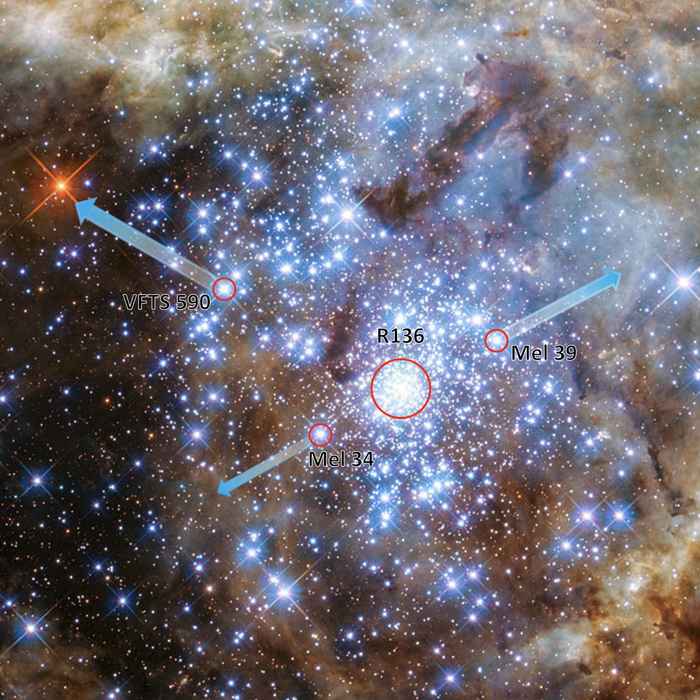Forensic reconstruction of the ejection of the three heavy stars from R136
31 July 2025

When star clusters form, newborn stars move around in a chaotic manner and can be thrown off course in near-collisions. The reconstruction by Portegies Zwart and astronomers from the University of Amsterdam shows that the interactions between the star VFTS 590, the double star Mel 39, and the double star Mel 34 caused the entire system to violently disintegrate in a single event. This is the first detailed reconstruction of such an energetic encounter ever.
Five stars
Portegies Zwart: "Such a precise reconstruction was even considered impossible. It gives us a unique insight into the core of a star cluster and the dynamic interactions that dominate such environments. The expectation was that stars would have been ejected in an interaction involving three or possibly four stars, but the fact that five stars were involved is a big surprise."
Around 60 so-called ‘runaway stars’ have been found in the R136 star cluster. These stars are considerably heavier than all previously found runaway stars. Some are more than 100 times heavier than the sun, and they sometimes reach speeds of more than 100 km/s. It was already clear that three of the runaway stars discovered by Stoop et al. in Gaia data were ejected simultaneously from the core of the R136 star cluster about 60,000 years ago. However, how this could have happened remained a mystery.
Cosmic detectives
The new simulations now also identify two other stars involved. The calculations clearly indicate that this is the binary star Mel 39, whose masses are 140 and 80 times greater than that of the Sun. Furthermore, the calculations predict that the binary star is moving away from the star cluster at a speed of 64 km/s and lies in the orbital plane of the other ejected binary star, Mel 34, one of the heaviest star pairs in the local universe. Mel 34 has now been traced back by the cosmic detectives to a system of five stars that has long since disappeared in the central part of the star cluster R136.